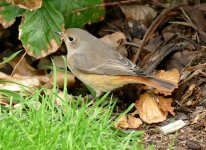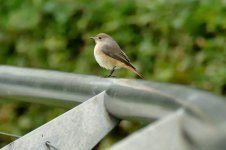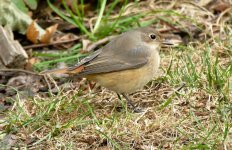Opinions are required with this specific bird as everyone who has watched it agrees that it's behaviour is exactly as for Black Redstart, ie very strong affinity to buildings and concrete even when there is thick vegetation nearby, happy to be out in the open, not particularly worried about humans, etc. If you were watching it as a silhouette you would swear it was Black.
But, we appreciate that doesn't make it Black !
Circumstantial : very late date for a Common but likely date if we were lucky enough to get an Eastern Black Redstart. Now here for the 8th day (appeared back end of Oct and is still present now (3rd Dec) looking like a bird that has reached it's destination, not one that's just stopping off on the way to Africa (it seems to be very healthy, and feeding well).
There appears to be very few details on FEMALE European Black Redstarts - most references are on the males - hence reaching out to this community in order to obtain any insight / feedback. Colouration of this bird appears to be the Asian sub species if it is a EBR.
Thank you in advance
Tracey
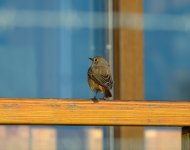
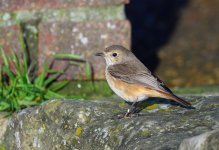
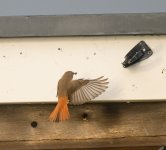
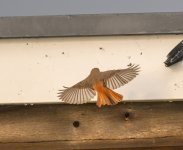
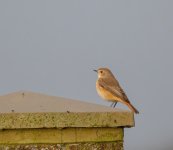
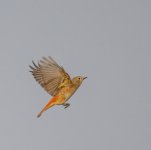
But, we appreciate that doesn't make it Black !
Circumstantial : very late date for a Common but likely date if we were lucky enough to get an Eastern Black Redstart. Now here for the 8th day (appeared back end of Oct and is still present now (3rd Dec) looking like a bird that has reached it's destination, not one that's just stopping off on the way to Africa (it seems to be very healthy, and feeding well).
There appears to be very few details on FEMALE European Black Redstarts - most references are on the males - hence reaching out to this community in order to obtain any insight / feedback. Colouration of this bird appears to be the Asian sub species if it is a EBR.
Thank you in advance
Tracey











